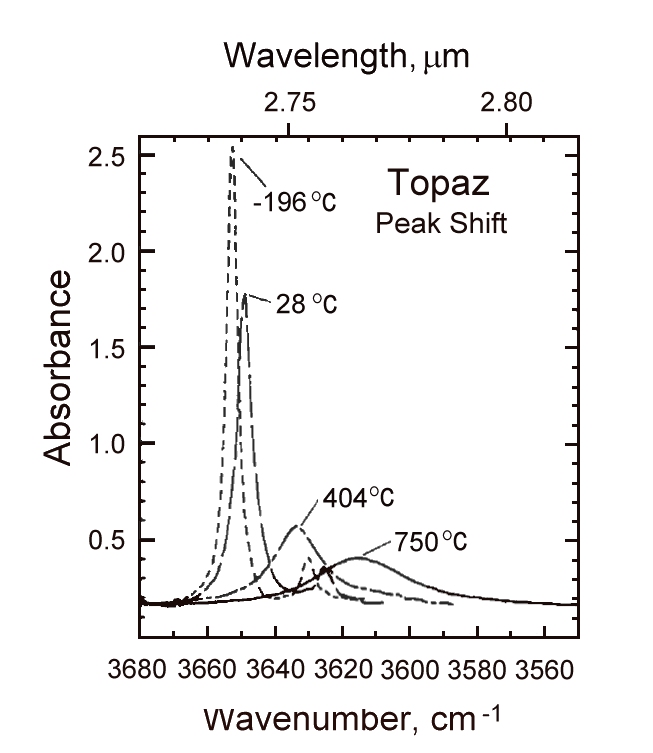We have studied the high temperature behavior of water and hydroxide in
quartz, feldspar, topaz, zircon, muscovite, cordierite, and beryl using
high temperature infrared spectroscopy. We have directly observed
processes such as dehydration and changes in hydrogen speciation. In
some minerals trace hydroxyl and water speciation and properties at
temperatures of geologic interest can be dramatically different from
those at 25°C. In muscivite, no changes in speciation occur prior to
dehydration at 750°C, whereas in topaz hydroxyl sites interconvert at
500°C. In metamict zircon stongly hydrogen-bonded hydroxyl in
preferentially lost from a continuum of sites during continuous
dehydration occurring from 400° to 900°C. There are
only minor changes in the O-H region spectrum of natural quartz at the
alpha-beta trnsition pont. In feldspar one type of moleuclar water is
lost at ~200°C, and at 600° to 800° a second water type converts
irreversibly to a new hydrous species. Changes at high temperatures
common to the infrared absroption bands of all minerals studies are:
broadening, a shift to lower wavenumbers, and a slight decrease in
integral intensity. Temperature coefficients fo the O-H stretching peak
shifts range from 0 to -0.045 cm
-1/°C. Lattice modes also
braoaden and shift to lower wavenumbers, typically with temperature
coefficients of about -0.03 cm
-1/°C.

Temperature dependence on the topaz OH bands in alpha-polarization as a function of Temperature.

